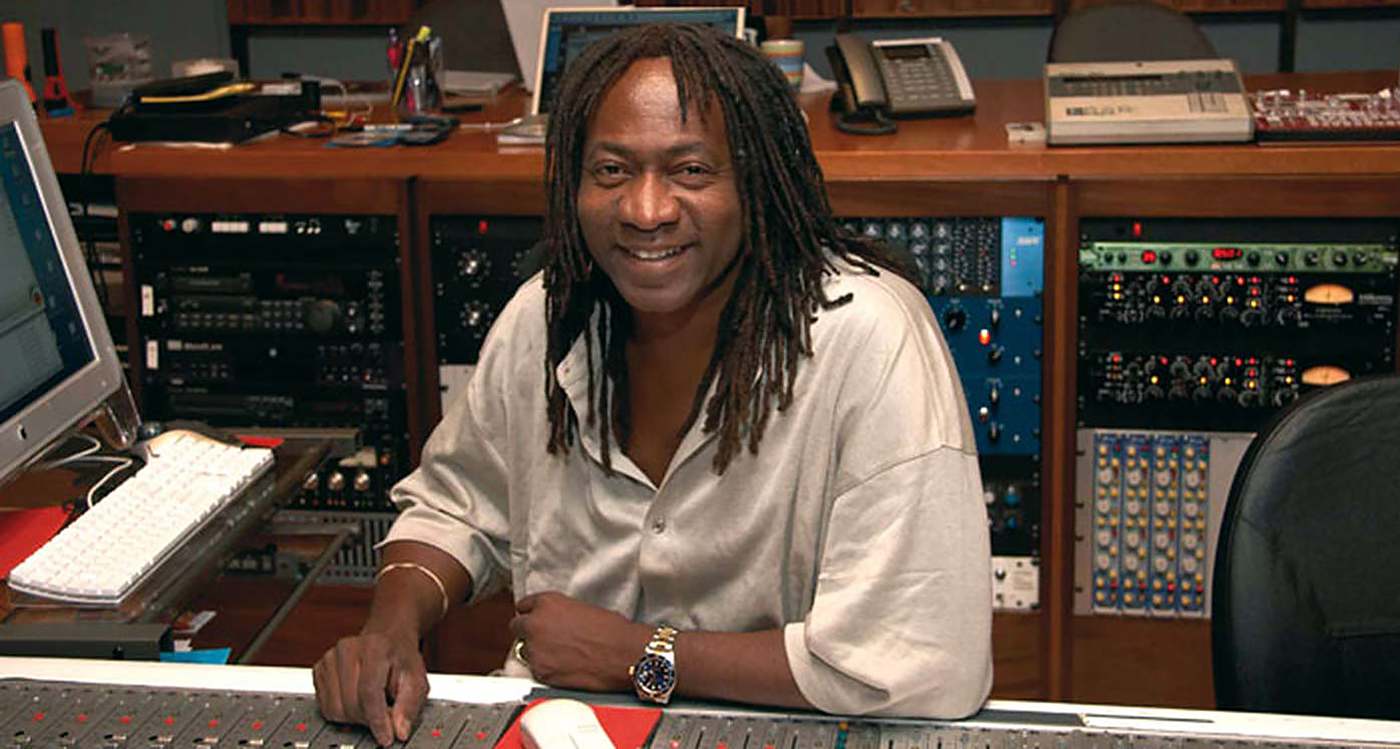Jimmy Douglass: Master of the Hybrid Approach with Sonnox Plug-ins
From the soulful sounds of Aretha Franklin to the rock legends of The Rolling Stones and the modern beats of Jay-Z and Timbaland, Jimmy Douglass has worked with some of the biggest names in music.
With a career spanning decades, Douglass has seen it all—from the golden era of tape to the rise of digital workstations. We caught up with the seasoned producer, engineer, and mixer to talk about his unique approach, blending analog and digital, and how Sonnox plug-ins play a pivotal role in his workflow.

Starting Out at Atlantic Records: A Front-Row Seat to History
Douglass got his start at Atlantic Records in New York, working on tape copies as a teenager. “It was an amazing time to be there,” he recalls. “I was fortunate enough to watch and learn from legends like Tom Dowd, Arif Mardin, Jerry Wexler, and Ahmet Ertegun. The first session I ever saw was for Disraeli Gears. Before that, I had never been in a studio in my life.”
I was fortunate enough to watch and learn from legends like Tom Dowd, Arif Mardin, Jerry Wexler, and Ahmet Ertegun Jimmy Douglass on working at Atlantic Records
Back then, Atlantic Records was attached directly to the studios, an "old school" setup that gave Douglass a unique learning environment with constant exposure to top-tier artists and producers. “It was a special time; we had an 8-track format, which was a big deal then. A few years later, I got the chance to remix parts of the Atlantic catalog when Tom Dowd was too busy. Some of that stuff was on 4-track!”
The Transition to Digital: From Tape to Pro Tools
Douglass embraced digital technology gradually, starting in the 1980s with early digital formats like Sony BVU and Mitsubishi’s digital deck. “Then came the Sony 3324 and 3348, which were like analog but digital reel-to-reel tapes,” he explains. He also experimented with the Synclavier, one of the first digital recording workstations.
Douglass got into Pro Tools early, when it was still called Sound Tools and limited to just two tracks. “I needed something at home for digital editing. But even then, Pro Tools was just a tape machine to me. I was an analog guy—I loved the sound, and I used Pro Tools mainly for extra tracks when I needed more than what was available on the main session.”
Discovering Sonnox Plug-ins: The Oxford Influence
Douglass was introduced to Sonnox plug-ins when he encountered the Oxford console at The Hit Factory around 2000. “That console made a lot of sense to me, and I got used to the sound of their EQs,” he says. Since then, he has incorporated Sonnox plug-ins into his mixing routine, particularly the EQ and TransMod.
Using the TransMod: A Versatile Tool for Shaping Sound
Douglass finds the TransMod especially useful on drums and percussion. “I use it to change the attacks, but it’s also great on bass and keyboards,” he explains. “I think of it as a tool that can modify the attack and release of instruments and drums. It can make sounds fatter or thinner and works like a modern gate. It expands, tightens, and can even clip sounds when needed.”
Why the Oxford EQ Stands Out
Though Douglass has access to a wide range of EQs, the Oxford EQ remains a staple in his mixes. “It’s the first digital EQ I really got comfortable with, and I know the curve well. It’s my go-to when I want something smooth and transparent. It’s a great general EQ that delivers the sound I need without any harshness.”
Recent and Upcoming Projects
Douglass’s recent work includes co-producing, recording, and mixing for rising artist Jared Evan, backed by Interscope, as well as mixing the latest projects for John Legend and The Roots. He continues to collaborate with Timbaland on his new projects and has been involved in various dance tracks and international projects from Paris and Germany. Based in Miami, Douglass is also working on a handful of local projects and singles.
Blending Analog and Digital: A Hybrid Approach
Despite his affinity for analog sound, Douglass embraces the advantages of digital technology, using a hybrid approach that combines the best of both worlds. “Our ears as consumers are now used to digital, but I still love the character of analog,” he shares. “Pro Tools and plug-ins like Sonnox give me the flexibility to work with more tracks and effects, while still capturing the warmth and depth I value from analog gear.”
Sonnox Plug-ins: Essential Tools in Douglass’s Arsenal
For Douglass, Sonnox plug-ins are integral to his mixing strategy. Whether it’s the smooth transparency of the Oxford EQ or the dynamic shaping capabilities of the TransMod, these tools allow him to craft mixes that retain the emotional impact of the original performance while meeting the demands of modern production.
As Douglass continues to evolve his approach, balancing the timeless qualities of analog with the precision of digital, his work remains a testament to the power of versatility and a keen ear for what makes music resonate.
